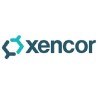
Phase 1, First-in-human, Dose-finding and Expansion Study to Evaluate XmAb®808 in Combination With...
Head and Neck Squamous Cell CarcinomaMelanoma Excluding Uveal Melanoma10 moreThe purpose of this study is to evaluate the safety, tolerability, and pharmacokinetics of intravenous (IV) administration of XmAb808 in combination with pembrolizumab in subjects with selected advanced solid tumors and to identify the minimum safe and biologically effective/recommended dose (RD) and schedule for XmAb808.

Neoadjuvant Chemoradiotherapy Combined With Camrelizumab and Nimotuzumab for Esophageal Squamous...
ToxicityDrugNeoadjuvant chemoradiotherapy followed by surgery has been the standard modality for locally advance esophageal carcinoma. According to CROSS study, the pathological complete remission rate achieved by paclitaxel and carboplatin with 41.4 Gy/23f was 49% for esophageal squamous cell carcinoma. But the 10-year overall survival rate was only 38%. How to increase the overall survival of esophageal carcinoma is a pivotal task. Both of Camrelizumab and Nimotuzumab have been demonstrated to be efficacious in the neoadjuvant treatment for esophageal squamous cell carcinoma in some small sample-size trials. Therefore, this trial is designed to combine adjuvant chemoradiotherapy with Camrelizumab and Nimotuzumab for resectable & potentially resectable locally advanced esophageal squamous cell carcinoma and explore the safety and primary efficacy of such combination.

Risk Adapted De-Intensification of Radio-Chemotherapy for Oropharyngeal Squamous Cell Carcinoma...
Oropharyngeal Squamous Cell CarcinomaThis study builds on the results of several prior studies that we have been involved with to test the hypothesis that Risk-Adapted De-Intensification of Radiation Therapy and chemotherapy based on HPV subtype, plasma circulating free HPV DNA (cfHPV DNA) level, and cfHPV DNA clearance rate produces Local-Regional Control rates that are similar to what has been achieved with more aggressive therapy in patients with Favorable Prognosis Oropharyngeal Squamous Cell Carcinoma (OPSCC).

Pembrolizumab and Induction Chemotherapy in Locally Advanced HNSCC
Head and Neck Squamous Cell CarcinomaTo study induction therapy with Nab-paclitaxel, Cisplatin and Pembrolizumab in patients with Locally Advanced HNSCC.

Oncolytic Adenovirus TILT-123 With Pembrolizumab as Treatment for Ovarian Cancer
Platinum-refractory Ovarian CarcinomaPlatinum-resistant Ovarian Cancer7 moreThis is an open-label, phase 1, dose-escalation, multicenter and multinational trial evaluating the safety of oncolytic adenovirus TILT-123 in combination with Pembrolizumab in patients with platinum resistant or refractory ovarian cancer.

Neoadjuvant Pembrolizumab and Lenvatinib for Renal Cell Carcinoma
Renal Cell CarcinomaThis study will evaluate the effect of investigational drugs, pembrolizumab alone or pembrolizumab with lenvatinib, on the immune systems response to kidney cancer when given before and after surgery to remove kidney cancer.

Concurrent and Adjuvant Nimotuzumab Combined With Induction Chemotherapy Plus Chemoradiation in...
Nasopharyngeal Carcinoma by AJCC V8 StageNimotuzumab is an IgG1 humanized monoclonal antibody that recognized an epitope located in the extra cellular domain of the human epidermal growth factor receptor (EGFR). Nimotuzumab has been granted approval for use in squamous cell carcinoma of head and neck (SCCHN), glioma and nasopharyngeal cancer in different countries. This is a multi-center, randomized controlled trial, with the purpose to evaluate the therapeutic efficacy and safety of nimotuzumab combined with induction chemotherapy plus chemoradiation and adjuvant therapy in locoregionally advanced nasopharyngeal carcinoma.

Study of Disitamab Vedotin Combined With Gemcitabine in Neoadjuvant Treatment of Urothelial Carcinoma...
Radical CystectomyUrothelial CarcinomaA multicenter, open, single arm, phase II clinical trial was designed for myometrial invasive bladder cancer to evaluate the efficacy and safety of RC48-ADC combined with gemcitabine in preoperative neoadjuvant treatment of MIBC, and provide high-level clinical evidence for gemcitabine combined with ADC in the treatment of MIBC

FLASH Radiotherapy for Skin Cancer
Basal Cell CarcinomaCutaneous Squamous Cell CarcinomaThis is a single center randomized selected Phase II study of FLASH radiotherapy (RT) versus standard of care (SOC) radiotherapy in patients with localized Cutaneous Squamous Cell Carcinoma (cSCC) or Basal Cell Carcinoma (BCC). In summary, the aims of the study are to describe and compare the toxicity and efficacy of high dose rate radiotherapy (FLASH therapy) to SOC conventional radiotherapy (according to the standard guidelines per lesion size) through a randomized Phase II selection study in patients presenting localized cSCC or BCC requiring a radiotherapy treatment.

Testing the Anti-Cancer Drug Darolutamide in Patients With Testosterone-driven Salivary Gland Cancers...
Locally Advanced Salivary Gland CarcinomaMetastatic Salivary Gland Carcinoma2 moreThis phase II trial tests how well darolutamide and leuprolide acetate work in treating patients with androgen receptor positive salivary cancer that has spread from where it first started (primary site) to other places in the body (metastatic), cannot be removed by surgery (unresectable) or that has come back after a period of responding to prior therapy (recurrent). Darolutamide is in a class of medications called androgen receptor inhibitors. It works by blocking the effects of androgen (a male reproductive hormone) to stop the growth and spread of cancer cells. Leuprolide acetate is in a class of medications called gonadotropin-releasing hormone (GnRH) agonists. It works by decreasing the amount of certain hormones in the body. Giving darolutamide in combination with leuprolide acetate may help to stop the growth of tumor cells that need androgens to grow or shrink them.
